Explore the Best AI Image Gallery
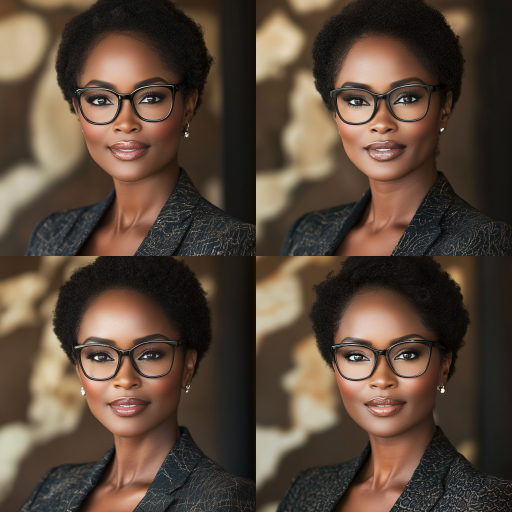
AI-Driven Visual Experiences: The Future of Creativity and Technology
Artificial Intelligence (AI) has significantly influenced various sectors, and the creative industry is no exception. AI-driven visual experiences are revolutionizing art, design, advertising, and entertainment, evident in the emergence of AI-generated art and tools that enhance creative workflows. This blog post explores the impact of AI in the creative industry, potential uses, ethical considerations, and future trends.
The Impact of AI on the Creative Industry
The creative sector, once solely the domain of human expression, is now intertwining with AI technologies. Artists are beginning to leverage AI algorithms to create stunning visual pieces that challenge conventional boundaries. One major tool in this transition is Generative Adversarial Networks (GANs), which produce unique pieces of art by learning from an extensive dataset of images.
AI can help artists enhance their creative processes through software like Adobe's Sensei, which applies AI and machine learning to make recommendations and automate mundane tasks. In an increasingly fast-paced world, services that analyze trends and generate suggestions can help creatives to keep their work relevant and engaging.
Potential Uses in Various Sectors
The uses of AI in the creative industry extend far beyond traditional art forms. The following are some notable applications:
- Advertising: Brands are utilizing AI to create personalized advertising campaigns. AI can analyze data to produce visual assets tailored to individual preferences, significantly increasing engagement rates.
- Film and Animation: AI can generate realistic CGI characters and backgrounds. Programs like Deepfake can create incredibly lifelike performances, opening new avenues for storytelling.
- Fashion: AI tools help designers conceptualize collections by predicting trends. AI can analyze social media and retail data to inform decisions, leading to designs that resonate with consumers.
- Gaming: Game developers leverage AI to generate immersive environments and characters dynamically. AI can adapt gameplay based on players' skills, offering a personalized experience.
Ethical Considerations
While integrating AI into the creative process presents exciting opportunities, ethical considerations cannot be overlooked. Key concerns include:
- Copyright: As AI algorithms create art, questions arise about intellectual property ownership. Who holds the copyright: the AI, the programmer, or the artist who used the tool?
- Job Displacement: The increasing reliance on AI may threaten traditional creative jobs. While AI can enhance creativity, it may also lead to reduced opportunities for human artists.
- Bias: AI systems can inherit biases present in their training data, resulting in artworks that may unintentionally reinforce stereotypes or exclude marginalized voices.
As the creative industry navigates these challenges, establishing clear guidelines and frameworks will be crucial for ensuring ethical practices.
Future Trends in AI-Driven Visual Experiences
The future of AI-driven visual experiences appears bright, with several promising trends on the horizon:
- Augmented Reality (AR) and Virtual Reality (VR): AI integration in AR and VR will create more interactive and engaging experiences in fields such as education, entertainment, and art exhibitions. Imagine attending a virtual gallery where AI curates artworks based on personal preferences.
- Collaborative Creations: The collaborative nature of AI will foster partnerships between human artists and AI, leading to innovative mixed-media projects that blend human creativity with machine efficiency.
- Real-time Adaptability: Future AI tools will likely analyze user engagement and adapt visual elements in real-time, enhancing the overall experience in applications like gaming and live performances.
- Increased Accessibility: AI tools will democratize access to creative technologies, empowering individuals without formal training to create and express themselves artistically.
In conclusion, AI-driven visual experiences are reshaping the creative landscape, offering a multitude of opportunities while raising significant questions that warrant thoughtful consideration. As artists and tech developers continue to collaborate, the intersection of technology and creativity will undoubtedly yield remarkable innovations that define the future of art.
](https://images.ai-img.art/thumbnails/150/1614d64dd7156c95db952258978be809eb3db8cea4453fec69c49cbdfe63fa94.webp)


](https://images.ai-img.art/thumbnails/150/8c3bd422d50d35735d8fb33bd314a79e30e5b150129d5d09bdad822a2007593f.webp)
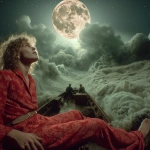

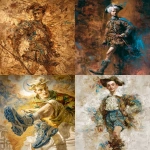

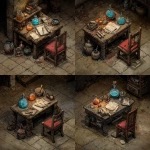
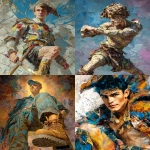


](https://images.ai-img.art/thumbnails/150/3a60737a5b67fa252207ad1ae6db245a26284f53fb5846996bb34515b39ff269.webp)